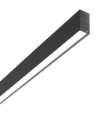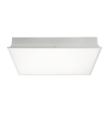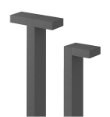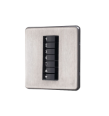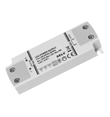
- Home
- FAQ
FAQs
What is Photometry?
If you are working with lighting it is likely you will come across the term 'Photometry' or perhaps you have seen photometric files. "Photometry is the science of the measurement of light, in terms of its perceived brightness to the human eye. It is distinct from radiometry, which is the science of measurement of radiant energy (including light) in terms of absolute power." Wikipedia.com
What is CRI?
Colour Rendering Index (CRI for short), relates to light source quality in terms of how well it renders colours or objects in comparison to natural day light. For example, natural light would be considered as having a CRI of 100, so the closer the number an artificial light source is scored to 100 the better it is at rendering colours.
If you have ever purchased an item of clothing and noticed that it looked a different colour outside in the daylight from when you tried it on in the fitting room - then this would be a good example of where the CRI of the lighting in the store is not a close match to daylight. Or perhaps you have visited a salon and found your hair looking a different colour in the salon chair to when you stepped outside in the natural light? A light source with a high CRI of 90+ would be a very close likeness to daylight so would be seen to render colours to their true likeness - a light source with a low CRI however would be a sign that the light source would nor render objects/ colours to their true likeness.
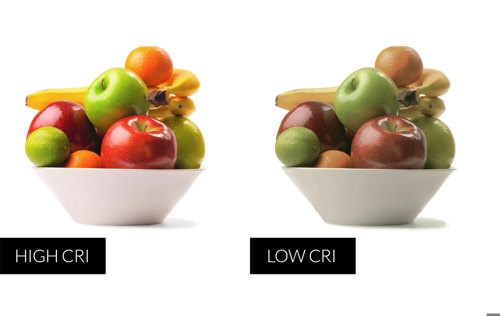
Having a light source with a very high CRI (90+) is important for lighting designers working on projects such as art galleries, or lighting for the print industry so that colours can be shown as close as possible to their truest form. Most commercial lighting projects, such as lighting for retail or offices can manage with CRI 80+.
An example of a light source with a very low CRI would be street lighting which can sometimes be as low as CRI 20. Think back to when you see cars under street lighting and how they can appear very flat and certainly not the same colour as they would in natural daylight.
CRI (Colour Rendering Index) is measured in Ra.
What is CCT?
Colour Correlated Temperature (CCT for short) relates to the appearance of a light source's colour. A light source can often be described as having a ‘cool’ or ‘warm’ temperature. We measure CCT in Kelvin (K). For example, a light source with a warm appearance measures around 2700K - 3000K. A light source with a cooler tone would typically be from 4000K - 6500K.
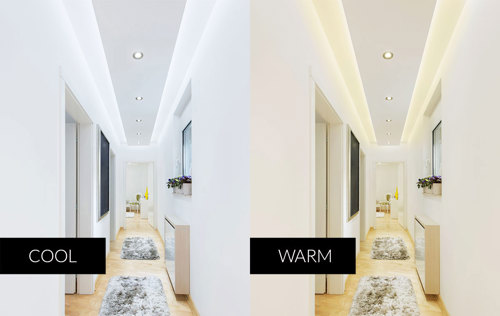
We recommend that lighting with a warmer appearance (2700K to 3000K) is best suited to domestic and hospitality environments, with cooler lighting (4000K) upwards being better for commercial lighting applications, such as office and retail type environments.
What is a PIR Sensor?
PIR stands for 'Passive Infrared Sensor'.
A PIR is an electronic device that is used for detecting presence or lack of presence in a space. In lighting we use PIR sensors and to control when a light will switch on and turn off depending on the presence in the space. Presence detectors are ideal when lighting spaces where lighting is not required all of the time. For example lighting for public toilets, corridors, stairs and board rooms (the types of spaces that are not used frequently). PIR sensors range in their performance depending on the job they have been chosen for. They can vary in beam angle/ spread, and the sensitivity can also be adjusted to reflect how responsive the lights are, for example you wouldn't want an exterior PIR sensor to trigger an exterior bulkhead light each time there were a gust of wind.
